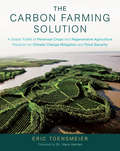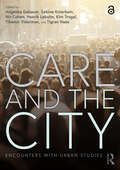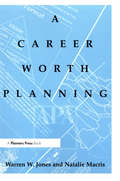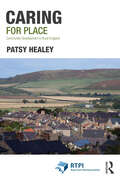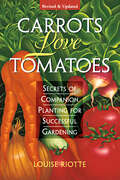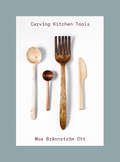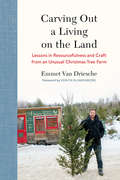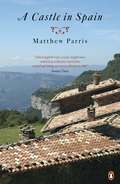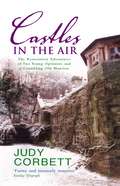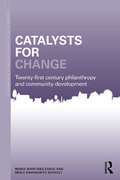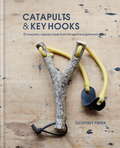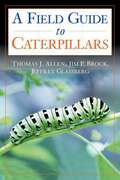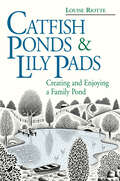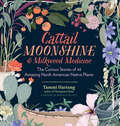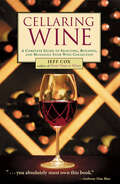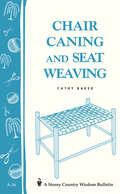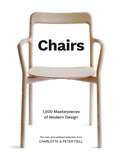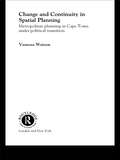- Table View
- List View
Car Basics (Collins Gem)
by Kevin ElliottChallenged by the thought of changing a wheel? Want to know where the water goes? Buying a car and faced with unfamiliar legal documents? Help is at hand! Gem Car Basics is the essential pocket companion to car maintenance, safety and regulations.
The Carbon Farming Solution: A Global Toolkit of Perennial Crops and Regenerative Agriculture Practices for Climate Change Mitigation and Food Security
by Eric Toensmeier Dr Hans HerrenWith carbon farming, agriculture ceases to be part of the climate problem and becomes a critical part of the solution Agriculture is rightly blamed as a major culprit of our climate crisis. But in this groundbreaking new book, Eric Toensmeier argues that agriculture—specifically, the subset of practices known as “carbon farming”—can, and should be, a linchpin of a global climate solutions platform. Carbon farming is a suite of agricultural practices and crops that sequester carbon in the soil and in above-ground biomass. Combined with a massive reduction in fossil fuel emissions—and in concert with adaptation strategies to our changing environment— carbon farming has the potential to bring us back from the brink of disaster and return our atmosphere to the “magic number” of 350 parts per million of carbon dioxide. Toensmeier’s book is the first to bring together these powerful strategies in one place, including in-depth analysis of the available research and, where research is lacking, a discussion of what it will take to get us there. Carbon farming can take many forms. The simplest practices involve modifications to annual crop production. Although many of these modifications have relatively low sequestration potential, they are widely applicable and easily adopted, and thus have excellent potential to mitigate climate change if practiced on a global scale. Likewise, grazing systems such as silvopasture are easily replicable, don’t require significant changes to human diet, and—given the amount of agricultural land worldwide that is devoted to pasture—can be important strategies in the carbon farming arsenal. But by far, agroforestry practices and perennial crops present the best opportunities for sequestration. While many of these systems are challenging to establish and manage, and would require us to change our diets to new and largely unfamiliar perennial crops, they also offer huge potential that has been almost entirely ignored by climate crusaders. Many of these carbon farming practices are already implemented globally on a scale of millions of hectares. These are not minor or marginal efforts, but win-win solutions that provide food, fodder, and feedstocks while fostering community self-reliance, creating jobs, protecting biodiversity, and repairing degraded land—all while sequestering carbon, reducing emissions, and ultimately contributing to a climate that will remain amenable to human civilization. Just as importantly to a livable future, these crops and practices can contribute to broader social goals such as women’s empowerment, food sovereignty, and climate justice. The Carbon Farming Solution does not present a prescription for how cropland should be used and is not, first and foremost, a how-to manual, although following up on references in a given section will frequently provide such information. Instead, The Carbon Farming Solution is—at its root—a toolkit. It is the most complete collection of climate-friendly crops and practices currently available. With this toolkit, farmers, communities, and governments large and small, can successfully launch carbon farming projects with the most appropriate crops and practices to their climate, locale, and socioeconomic needs. Toensmeier’s ultimate goal is to place carbon farming firmly in the center of the climate solutions platform, alongside clean solar and wind energy. With The Carbon Farming Solution, Toensmeier wants to change the discussion, impact policy decisions, and steer mitigation funds to the research, projects, and people around the world who envision a future where agriculture becomes the protagonist in this fraught, urgent, and unprecedented drama of our time. Citizens, farmers, and funders will be inspired to use the tools presented in this important new book to transform degraded lands around the world into productive carbon-storing landscapes.
Care and the City: Encounters with Urban Studies
by Angelika Gabauer, Sabine Knierbein, Nir Cohen, Henrik Lebuhn, Kim Trogal, Tihomir Viderman, and Tigran HaasCare and the City is a cross-disciplinary collection of chapters examining urban social spaces, in which caring and uncaring practices intersect and shape people’s everyday lives. While asking how care and uncare are embedded in the urban condition, the book focuses on inequalities in caring relations and the ways they are acknowledged, reproduced, and overcome in various spaces, discourses, and practices. This book provides a pathway for urban scholars to start engaging with approaches to conceptualize care in the city through a critical-reflexive analysis of processes of urbanization. It pursues a systematic integration of empirical, methodological, theoretical, and ethical approaches to care in urban studies, while overcoming a crisis-centered reading of care and the related ambivalences in care debates, practices, and spaces. These strands are elaborated via a conceptual framework of care and situated within broader theoretical debates on cities, urbanization, and urban development with detailed case studies from Europe, the Americas, and Asia. By establishing links to various fields of knowledge, this book seeks to systematically introduce debates on care to the interconnecting fields of urban studies, planning theory, and related disciplines for the first time.
Care and the City: Encounters with Urban Studies
by Nir Cohen Henrik Lebuhn Kim Trogal Tihomir Viderman Tigran Haas Angelika Gabauer Sabine KnierbeinCare and the City is a cross-disciplinary collection of chapters examining urban social spaces, in which caring and uncaring practices intersect and shape people’s everyday lives. While asking how care and uncare are embedded in the urban condition, the book focuses on inequalities in caring relations and the ways they are acknowledged, reproduced, and overcome in various spaces, discourses, and practices. This book provides a pathway for urban scholars to start engaging with approaches to conceptualize care in the city through a critical-reflexive analysis of processes of urbanization. It pursues a systematic integration of empirical, methodological, theoretical, and ethical approaches to care in urban studies, while overcoming a crisis-centered reading of care and the related ambivalences in care debates, practices, and spaces. These strands are elaborated via a conceptual framework of care and situated within broader theoretical debates on cities, urbanization, and urban development with detailed case studies from Europe, the Americas, and Asia. By establishing links to various fields of knowledge, this book seeks to systematically introduce debates on care to the interconnecting fields of urban studies, planning theory, and related disciplines for the first time.
Career Worth Planning: Starting Out and Moving Ahead in the Planning Profession
by Warren Jones Natalie MacrisNow that your planning degree is in sight or in hand, how and where can you find your "dream job?" Once you're on the job, what can you do to not just survive, but thrive and avoid common professional pitfalls? In A Career Worth Planning, two veteran planners offer a road map for success. Packed with practical information and useful advice, it is must reading for planning students, new planners, and experienced planners looking to advance their careers. Career questions can paralyze beginning planners. What are the differences between working for a public planning agency or a private consulting firm? What does an employer look for in a job candidate? How can you set yourself apart from other job hunters through your resume and in an interview? A Career Worth Planning answers these tough questions and many others. But landing a job is only half the battle. Once you're there, how do you negotiate the career ladder, even in the most difficult circumstances? Here are nuggets of wisdom on how to deal with a bad boss, identify crucial "insiders" who can make or break your success on the job, clarify ethical conflicts, manage political land mines, and yes, even evaluate your job satisfaction and determine when you're ready to move on. Wherever you are along your career path, this book will help you assess your skills, preferences, and work style, and find the planning niche that fits you.
Career Worth Planning: Starting Out and Moving Ahead in the Planning Profession
by Warren Jones Natalie MacrisNow that your planning degree is in sight or in hand, how and where can you find your "dream job?" Once you're on the job, what can you do to not just survive, but thrive and avoid common professional pitfalls? In A Career Worth Planning, two veteran planners offer a road map for success. Packed with practical information and useful advice, it is must reading for planning students, new planners, and experienced planners looking to advance their careers. Career questions can paralyze beginning planners. What are the differences between working for a public planning agency or a private consulting firm? What does an employer look for in a job candidate? How can you set yourself apart from other job hunters through your resume and in an interview? A Career Worth Planning answers these tough questions and many others. But landing a job is only half the battle. Once you're there, how do you negotiate the career ladder, even in the most difficult circumstances? Here are nuggets of wisdom on how to deal with a bad boss, identify crucial "insiders" who can make or break your success on the job, clarify ethical conflicts, manage political land mines, and yes, even evaluate your job satisfaction and determine when you're ready to move on. Wherever you are along your career path, this book will help you assess your skills, preferences, and work style, and find the planning niche that fits you.
Caring for Place: Community Development in Rural England (ISSN)
by Patsy HealeyThis book draws on preeminent planning theorist Patsy Healey’s personal experiences as a resident of a small rural town in England, to explore what place and community mean in a particular context, and how different initiatives struggle to get a stake in the wider governance relations while maintaining their own focus and ways of working. Throughout the book, Healey assesses the public value generated by community initiatives and the impact of such activity on wider governance dynamics.Healey explores the power which small communities are able to mobilise through self-organisation and grassroots activism. Through the lens of Wooler and Glendale as a micro-society, the book centres on a community experiencing an economic and demographic transition. It focuses on three initiatives developed and led by local people – a small community development trust, an informal attentionmobilising network, and a Neighbourhood Plan project which uses an opportunity provided within the formal planning system. It examines how, in such civil society activism, people came together to promote local development in a place and community neglected by the dominant political economy.The book details the power and force of community initiative and its potential for transforming both the future possibilities for the place and community itself, as well as wider governance relations. Overall, it seeks to enrich academic and policy discussion about how the relations between formal government and civil society energy could evolve in more productive and progressive directions.
Caring for Place: Community Development in Rural England (ISSN)
by Patsy HealeyThis book draws on preeminent planning theorist Patsy Healey’s personal experiences as a resident of a small rural town in England, to explore what place and community mean in a particular context, and how different initiatives struggle to get a stake in the wider governance relations while maintaining their own focus and ways of working. Throughout the book, Healey assesses the public value generated by community initiatives and the impact of such activity on wider governance dynamics.Healey explores the power which small communities are able to mobilise through self-organisation and grassroots activism. Through the lens of Wooler and Glendale as a micro-society, the book centres on a community experiencing an economic and demographic transition. It focuses on three initiatives developed and led by local people – a small community development trust, an informal attentionmobilising network, and a Neighbourhood Plan project which uses an opportunity provided within the formal planning system. It examines how, in such civil society activism, people came together to promote local development in a place and community neglected by the dominant political economy.The book details the power and force of community initiative and its potential for transforming both the future possibilities for the place and community itself, as well as wider governance relations. Overall, it seeks to enrich academic and policy discussion about how the relations between formal government and civil society energy could evolve in more productive and progressive directions.
Carrots Love Tomatoes: Secrets of Companion Planting for Successful Gardening
by Louise RiotteFor over 30 years, this classic companion-gardening guide has outlined the keys to creating a harmoniously varied and bountiful garden.
Carving Kitchen Tools
by Moa Brännström OttCarving Kitchen Tools is the beginning of your woodworking journey and is a practical guide to creating your own beautiful utensils.
Carving Out a Living on the Land: Lessons in Resourcefulness and Craft from an Unusual Christmas Tree Farm
by Emmet Van DriescheWhen he first envisioned becoming a farmer, author Emmet Van Driesche never imagined his main crop would be Christmas trees, nor that such a tree farm could be more of a managed forest than the conventional grid of perfectly sheared trees. Carving Out a Living on the Land tells the story of how Van Driesche navigated changing life circumstances, took advantage of unexpected opportunities, and leveraged new and old skills to piece together an economically viable living, while at the same time respecting the land’s complex ecological relationships. From spoon carving to scything, coppicing to wreath-making, Carving Out a Living on the Land proves that you don’t need acres of expensive bottomland to start your land-based venture, but rather the creativity and vision to see what might be done with that rocky section or ditch or patch of trees too small to log. You can lease instead of buy; build flexible, temporary structures rather than sink money into permanent ones; and take over an existing operation rather than start from scratch. What matters are your unique circumstances, talents, and interests, which when combined with what the land is capable of producing, can create a fulfilling and meaningful farming life.
A Castle in Spain
by Matthew Parris'Stands apart... This Englishman's castle might have started as a dream, but it has ended up being an extraordinary reality' Sunday TimesWalking in the Pyrenees one spring morning Matthew Parris stumbled upon a magnificent ruined mansion standing on the edge of a line of huge cliffs. Later he was to discover that parts of the house dated back to the 14th century though it had not been completed until 1559; and that it had survived two massive earthquakes before falling into disrepair in the early 1960s. A few years later, seduced by 'one of those foolish challenges that grip us in middle life', Parris bought the house, L'Avenc, and set about restoring it to its full glory. This delightful book chronicles it all: the original discovery, the attempts to discover its history, and then the long effortful years trying to bring it back to life in the face of scepticism from family, friends and Spanish neighbours. The original edition of A Castle in Spain was published in 2005 when the renovations were a work in progress; this new edition triumphantly records all that has happened since.
Castles In The Air: The Restoration Adventures of Two Young Optimists and a Crumbling Old Mansion
by Judy CorbettCastles in the Air is a beautifully written, autobiographical story of rescuing an ancient mansion. Gwydir Castle was inhabited by ravers and rats until Judy Corbett and her husband Peter Welford found and acquired this 500-year-old house mouldering in the foothills of Snowdonia. Despite the toads, strange smells and squatters, they decided to mortgage themselves to the hilt to bring the castle back to life.This is an evocatively written and genuinely moving book and is infused with an extraordinary sense of place. The couple's adventures in a gothic wonderland lead them through plots both supernatural and historical. In a museum storeroom in a Bronx warehouse they find a missing room, in the castle's Solar Tower the ghost of a young woman appears and from the far edges of the woods a silent man called Sven emerges to befriend the couple and their beloved castle.For everyone who has ever wanted to live in a glorious house or escape from the mundanity of life - Castles in the Air is pure magic.
Catalysts for Change: 21st Century Philanthropy and Community Development (Community Development Research and Practice Series)
by Maria Martinez-Cosio Mirle Rabinowitz BussellWinner of the Community Development Society's 2014 Current Research Award! 21st Century Philanthropy and Community fills a gap in the literature on philanthropic organizations and how they intertwine with community development. Drawing first on the history of philanthropic funding, Maria Martinez-Cosio and Mirle Bussell look at developments in the last twenty years in detail, focussing on five key case studies from across America. The authors use their own first hand experiences and research to forge a new path for academic research in an area where it has been lacking. With the current economic climate forcing shrewd spending, foundations need all the guidance they can find on how to appropriately channel their funds in the best way. But how can these sorts of community projects be analyzed for effectiveness? Is there a quantitative rather than qualitative element which can be studied to give real feedback to those investing in projects? Arguing against a one-size-fits-all model, the authors illustrate the importance of context and relationships in the success of these projects.
Catalysts for Change: 21st Century Philanthropy and Community Development (Community Development Research and Practice Series)
by Maria Martinez-Cosio Mirle Rabinowitz BussellWinner of the Community Development Society's 2014 Current Research Award! 21st Century Philanthropy and Community fills a gap in the literature on philanthropic organizations and how they intertwine with community development. Drawing first on the history of philanthropic funding, Maria Martinez-Cosio and Mirle Bussell look at developments in the last twenty years in detail, focussing on five key case studies from across America. The authors use their own first hand experiences and research to forge a new path for academic research in an area where it has been lacking. With the current economic climate forcing shrewd spending, foundations need all the guidance they can find on how to appropriately channel their funds in the best way. But how can these sorts of community projects be analyzed for effectiveness? Is there a quantitative rather than qualitative element which can be studied to give real feedback to those investing in projects? Arguing against a one-size-fits-all model, the authors illustrate the importance of context and relationships in the success of these projects.
Catapults & Key Hooks: Everyday objects made from foraged and gathered wood
by Geoffrey FisherWhether building a bee hotel to help your garden's ecosystem thrive, crafting a catapult, whistle, skipping rope or cup and ball game to give away, or making a key hook or cobweb brush to organise your home, the result of each will be entirely unique while also effortlessly stylish.All basic woodworking techniques are covered, plus Geoffrey also shows how best to prepare materials, including checking for disease, drying and stripping bark, and gives a detailed guide on your essential tool kit - what to have, how to handle your tools safely and how to maintain everything to the highest standard -meaning anyone can pick up Catapults & Key Hooks and dive straight into the world of Geoffrey's designs.
Caterpillars in the Field and Garden: A Field Guide to the Butterfly Caterpillars of North America (Butterflies Through Binoculars)
by Thomas J. Allen Jim P. Brock Jeffrey GlassbergJeffrey Glassberg's acclaimed Butterflies through Binoculars guides have revolutionized the way we view butterflies. Now there's a field guide in the same practical format, and with the same emphasis on conservation, to identify caterpillars. Caterpillars are as varied, fascinating, and often as colorful as the adult butterflies they become. This is the most comprehensive guide to these creatures available. It contains all the information necessary to find and identify the caterpillars of North America--from Two-tailed Swallowtails, some of the largest butterfly caterpillars at just over two inches when fully grown, to tiny Western Pygmy-Blues. Caterpillar seekers will learn how to distinguish between butterfly caterpillars and moth caterpillars, where and how to find caterpillars, and the visual differences between young and older caterpillars. Each species section describes how to identify the caterpillar, complete with brilliant photos--many published here for the first time. To make for easy field use, each caterpillar's key physical features, abundance, habitat, and major hostplants are listed on the same page as its photo. The book also contains a special section on butterfly gardening, offering valuable information on how to set up a butterfly garden and raise healthy butterfly caterpillars, and provides a thorough list of the plants butterflies most like to feast on. From the concerned gardener who wishes not to kill caterpillars that may one day become beautiful butterflies to the serious butterflier wishing to take the hobby to the next level, this remarkable guide will provide all of the information necessary for an enriching caterpillar experience.
Catfish Ponds & Lily Pads: Creating and Enjoying a Family Pond
by Louise RiotteIn this entertaining guide, Louise Riotte tells you everything you need to know to create a productive pond on your own land, from siting the pond to maintaining water quality and stocking the pond with fish. She also includes plenty of old-time fishing lore and scrumptious recipes for freshly caught fish.
Cattail Moonshine & Milkweed Medicine: The Curious Stories of 43 Amazing North American Native Plants
by Tammi HartungWith curious facts and engaging visuals, Cattail Moonshine & Milkweed Medicine explores 43 North American plants that have helped shape our culture and traditions.
Cellaring Wine: A Complete Guide to Selecting, Building, and Managing Your Wine Collection
by Jeff CoxEnjoy the rich and complex flavors of wine that&’s been matured to its peak. In this comprehensive guide, Jeff Cox provides everything you need to know to build and maintain your own wine cellar. Whether you&’re thinking of storing a few extra bottles in a spare closet or are looking to properly age a garage full of wine, you&’ll find straightforward advice and helpful hints on successful cellaring techniques. Build and delight in your collection of wine while learning how to bring out the full potential of every bottle.
Chair Caning and Seat Weaving: Storey Country Wisdom Bulletin A-16 (Storey Country Wisdom Bulletin)
by Cathy BakerSince 1973, Storey's Country Wisdom Bulletins have offered practical, hands-on instructions designed to help readers master dozens of country living skills quickly and easily. There are now more than 170 titles in this series, and their remarkable popularity reflects the common desire of country and city dwellers alike to cultivate personal independence in everyday life.
Chairs: 1,000 Masterpieces of Modern Design, 1800 to the Present Day
by Charlotte Fiell Peter FiellFrom Alvar Aalto to Marco Zanuso, Chairs introduces over 1,000 groundbreaking innovations by the world's greatest designers. Tracing the history of the modern chair from 1800 to the present day, revered experts Charlotte and Peter Fiell comprehensively guide you through the fascinating world of seating design – from the functional office chair to the limited edition art piece.With more than 1,000 exquisite images alongside fascinating insights into the conception, design and production of these masterpieces, this definitive collection includes design classics such as Josef Hoffmann's Sitzmaschine, Robin Day's Polyprop and computer-generated masterworks by Zhang Zhoujie, amongst many more.
Chanel in 55 Objects: The Iconic Designer Through Her Finest Creations
by Emma Baxter-WrightThe elegance of the Little Black Dress. The simplicity of the Breton shirt. The luxury of the fragrance. These signatures exemplify the image of Chanel. Bringing to life the story and designs of Gabrielle Chanel, the most influential couturière in the history of fashion, Chanel in 55 Objects is an exquisite collection of bespoke illustrations and captivating text. The chic drawings depict her most iconic innovations including fashion, fragrance, jewellery and accessories, as well as the places, motifs and people that inspired her.
Change and Continuity in Spatial Planning: Metropolitan Planning in Cape Town Under Political Transition (Cities And Regions Ser.)
by Vanessa WatsonChange and Continuity in Spatial Planning addresses a question of enduring interest to planners: can planning really bring about significant and positive change? In South Africa the process of political transition appeared to create the preconditions for planners to demonstrate how their traditional humanitarian and environmental concerns could find concrete expression in the reshaping of the built environment.Integral to this story is how planning practices have been shaped by the past, in a rapidly changing context characterised by a globalising economy, new systems of governance, a changing political ideology, and a culture of intensifying poverty and diversity. More broadly, the book addresses the issue of how planners use power, in situations which themselves represent networks of power relations, where both planners and those they engage with operate through frames of reference fundamentally shaped by place and history.
Change and Continuity in Spatial Planning: Metropolitan Planning in Cape Town Under Political Transition
by Vanessa WatsonChange and Continuity in Spatial Planning addresses a question of enduring interest to planners: can planning really bring about significant and positive change? In South Africa the process of political transition appeared to create the preconditions for planners to demonstrate how their traditional humanitarian and environmental concerns could find concrete expression in the reshaping of the built environment.Integral to this story is how planning practices have been shaped by the past, in a rapidly changing context characterised by a globalising economy, new systems of governance, a changing political ideology, and a culture of intensifying poverty and diversity. More broadly, the book addresses the issue of how planners use power, in situations which themselves represent networks of power relations, where both planners and those they engage with operate through frames of reference fundamentally shaped by place and history.

